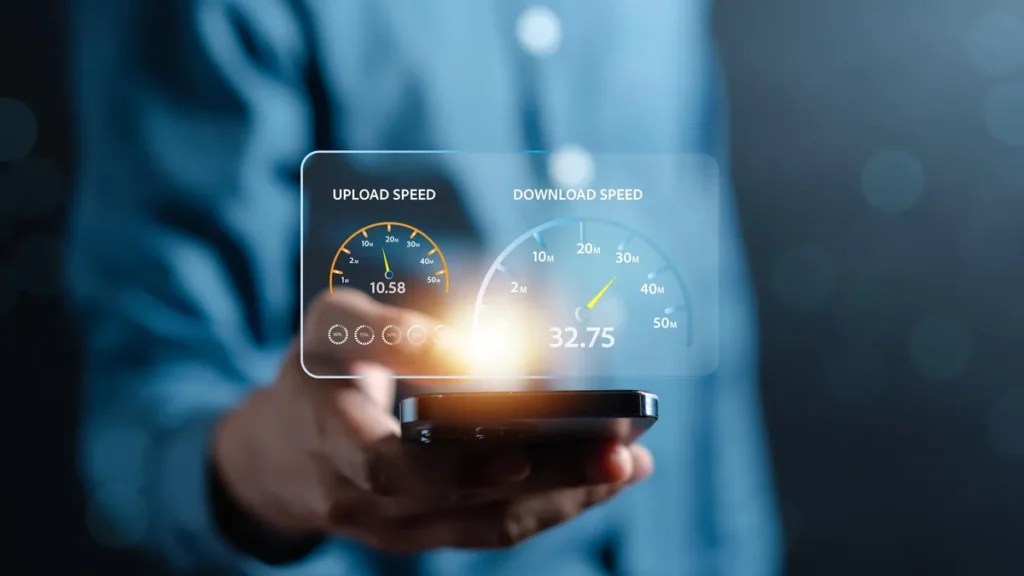Introduction
In today’s digital world, data speed is crucial for streaming TV shows and maintaining home security systems. Fast data speed ensures smooth streaming of TV shows. It also helps in ensuring the proper functioning of home security systems.
But have you ever paused to wonder what exactly influences this speed? This blog delves into the various factors determining data transmission speed, shedding light on the intricacies of digital communication.
The Basics of Data Transmission
Data transmission refers to the process of transferring data between different devices or networks. It’s the backbone of our digital communications, including internet browsing, streaming services, and wireless communication. The speed at which this data travels can significantly impact our digital experience, making it a topic worth exploring.
Types of Data Transmission Mediums
The medium through which data is transmitted plays a pivotal role in its speed. Here’s how different mediums impact data speed:
- Wired Connections: Generally offer more stable and faster data speeds compared to wireless connections. Ethernet cables, for example, provide a direct and interference-free path for data transmission.
- Wireless connections are convenient for mobility but can be slowed down by interference.
- Optical fibers are known for their fast speed, transmitting data at the speed of light for very high data transmission rates.
Bandwidth and Data Speed
Bandwidth essentially determines the maximum rate at which data can transfer over a network. Think of it as a highway.
The wider it is, the more cars (data) can travel at once. This makes everything move faster. Limited bandwidth can create a bottleneck and slow down data transmission, even if other factors are optimized for speed.
Latency and Its Impact on Data Speed
Latency refers to the delay before a transfer of data begins following an instruction for its transfer. It’s the time taken for data to travel from its source to its destination. High latency can make even a high-bandwidth connection feel sluggish.
Latency is caused by the distance data must travel and the number of devices it passes through, like routers and switches.
Latency is influenced by the distance data needs to travel. It is also affected by the number of devices, such as routers and switches, that the data passes through.
Network Infrastructure and Data Speed
The quality of network infrastructure, including routers, switches, and servers, significantly affects data speed. Up-to-date and well-maintained infrastructure can efficiently handle data, reducing bottlenecks and improving speed. Conversely, outdated or poor infrastructure can be a major limiting factor in data transmission rates.
External Factors Influencing Data Speed
Several external factors can impact data speed, including:
- Traffic Congestion: Like a real highway, more data traffic can lead to slower speeds.
- Distance from Server: The farther data has to travel, the longer it will take, increasing latency.
- Interference: Particularly relevant for wireless connections, interference from other devices can disrupt data transmission.
Future of Data Transmission Speed
Technological advancements continue to push the boundaries of data speed. New technology like 5G and better fiber-optic networks will make our internet faster and more reliable. This means our online experiences will improve.
Conclusion
Understanding what determines the speed at which data travels offers valuable insights into our connected world. Knowing what influences data speed can help us better understand technology and anticipate future advancements in our digital world.
FAQs
What is the most significant factor in data transmission speed?
The most significant factor can vary based on the context, but generally, the type of transmission medium, bandwidth, and latency are crucial determinants of data speed.
How does the type of medium affect data speed?
The medium impacts speed through its inherent properties. For example, optical fibers allow for faster data transmission than copper wires due to the physics of light versus electricity.
What role does network infrastructure play in data transmission speed?
Network infrastructure, like routers and servers, plays a pivotal role in managing data flow. Efficient infrastructure can minimize data congestion and reduce latency, enhancing speed.
Can we expect faster data speeds in the future?
Absolutely. With ongoing advancements in technology, such as the development of 5G and improvements in fiber optics, we can anticipate faster data speeds, which will continue to evolve the landscape of digital communication.

